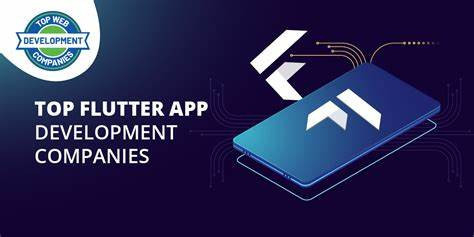views
Flutter’s strength lies in its ability to deliver native-like performance on iOS, Android, web, and desktop platforms. Using Dart and the Skia graphics engine, Flutter renders pixel-perfect UIs, reducing development time by 30–40% compared to native coding. In 2024, Flutter 3.16 introduced enhanced web support and Material You design, boosting its adoption. By 2025, Flutter powers 20% of new apps, with 500,000 developers contributing to its ecosystem, per GitHub data.
Key trends include AI integration, progressive web apps (PWAs), and foldable device support. AI-powered features, like chatbots in e-commerce apps, enhance user engagement, with 60% of Flutter apps incorporating machine learning by 2025. PWAs, supported by Flutter’s web capabilities, offer offline functionality, driving adoption in retail and media. Foldable device optimization, introduced in Flutter 3.19, ensures seamless UIs on devices like Samsung Galaxy Z Fold 7, addressing 15% of the premium smartphone market.
Flutter’s benefits include cost-efficiency, with 50% lower development costs than native platforms, averaging $30,000–$100,000 for a mid-sized app. Its hot reload feature accelerates debugging, improving productivity by 25%. Flutter’s widget-based architecture ensures consistent UIs across platforms, reducing maintenance efforts. Popular apps like Alibaba and Google Pay leverage Flutter for scalability, serving millions of users.
Industries adopting Flutter include e-commerce, where apps like Flipkart offer smooth shopping experiences, and healthcare, with telemedicine apps integrating real-time video. Education platforms like BYJU’S use Flutter for interactive learning, while fintech apps like Razorpay ensure secure transactions. Startups favor Flutter for rapid prototyping, with 70% of Indian startups using it in 2024.
Challenges include larger app sizes, averaging 20–30 MB, and limited native API access for advanced features like ARKit. DevOps practices, such as CI/CD pipelines, mitigate these by automating builds and testing, reducing deployment time by 35%. Tools like Codemagic and GitHub Actions integrate with Flutter, ensuring reliability. Performance optimization, using lazy loading and tree shaking, addresses size concerns.
The future of Flutter lies in embedded devices and IoT, with Flutter Embedded enabling apps for smart appliances. AI-driven personalization and Web3 integrations, like decentralized finance apps, are expected to grow 40% in 2025. Staying updated with Flutter Forward 2025 will unlock new features. For businesses, Flutter offers rapid market entry and scalability, enhanced by DevOps. Explore efficient development at Hexadecimal Software’s DevOps services (https://www.hexadecimalsoftware.com/devops-service/).




Comments
0 comment